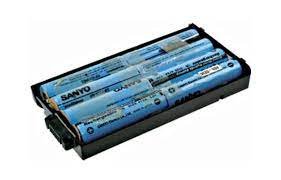Want to install Windows 7 on your computer without an optical drive? Perhaps you’re using a laptop that doesn’t have a built-in DVD drive, or even an older netbook or Windows tablet. Whatever the case, you’ll need to create a USB installation disc.
You can do this without any additional software, or you can use tools provided by Microsoft and third parties.
Regardless of the legacy Windows 7 left behind, it’s time to upgrade to Windows 10! With Windows 11 on the way, Windows 7 isn’t as desirable as a personal operating system. Still, for older hardware, or for those who prefer Windows 7, keep reading.
Two Ways to Create a Bootable USB Windows 7 Installation Disk
You have two options for creating a bootable USB drive that can install Windows 7.
Let’s take a look at each option.
What You’ll Need to Install Windows 7 From a USB Drive
Without an optical drive on the target computer, it is impossible to install Windows 7 as your preferred operating system. But if you have the original installation media and a USB flash drive, you can get it working.
It will also work with an external USB hard drive instead of a USB thumb drive. However, all data on the drive will be formatted and deleted.
The following steps can be completed on a Windows 7 computer. However, they are almost the same no matter what operating system you’re using, including Windows 10 or 11.
1. Open elevated command prompt
To begin, insert your USB flash drive into your main PC—the PC with the optical drive. You should also insert the Windows 7 installation DVD.
Click Start > All Programs > Accessories and right-click Command Prompt. Select Run as administrator. Of course, you need to be able to authenticate as an administrator on the PC you’re using.
On Windows 10, click Start then type “command”. Right-click the first result and choose Run as administrator.
One of the drives listed will be your USB drive. You’ll probably be able to see this based on the capacity of the drive. Note the disk number of the USB drive.
The USB flash drive is now ready for the Windows 7 installation files. If you’re lost at some point along the way, check out an in-depth guide on the process. It’s possible to accidentally erase data by doing this, so make sure you’re completely sure of what you’re doing.
2. Make Your Windows 7 USB Bootable
The format step may take some time depending on the specifications of your computer.
This will make your USB drive bootable.
3. Copy the Windows 7 Installation Files to the USB Drive
The last step can be done from My Computer. Just open the installation DVD, highlight everything, and drag it to the USB drive.
This too may take some time. When done, you should be all set. Insert the USB disk into your new PC, then enter the BIOS to adjust the boot order. Your target computer may also have a Select Boot Device option during start-up.
If you’re not sure how to do any of this, follow along with our guide on how to boot from USB.
Use Microsoft’s Windows 7 USB Installer Tool
If you want an easy solution for installing Windows 7 from a bootable USB drive, try Microsoft’s dedicated, downloadable tool.
The tool is no longer hosted on Microsoft’s official servers, so we will find a mirror of the same program hosted on archive.org.
The main download is only 2.8MB in size, so it should complete quickly. While you wait, insert your USB flash drive into your main PC. A 4GB drive should be plenty.
Meanwhile, you will also need the ISO version of Windows 7. Like the USB Download Tool, these files are no longer readily available from Microsoft’s official servers. Below are two versions hosted at archive.org.




